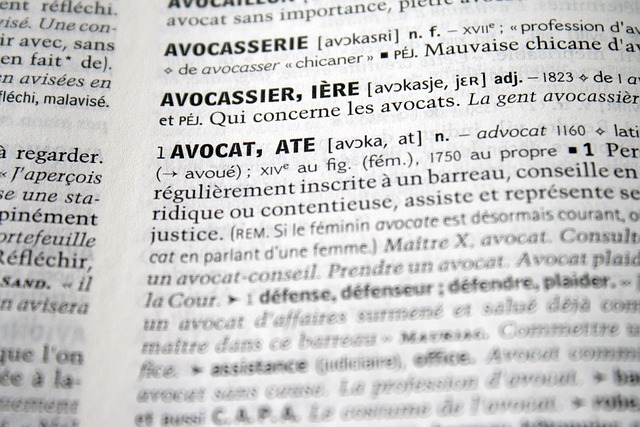Breath Alcohol Testing (BAL) is a critical tool in DUI cases, providing essential evidence through measuring blood alcohol concentration (BAC). Accurate BAL test results heavily influence legal proceedings and subsequent insurance rate adjustments for convicted individuals. However, factors like device calibration, environmental conditions, and individual variations can impact test reliability. To ensure fair Insurance Rate Adjustments after DUI, strict adherence to protocols, proper training, controlled environments, and detailed record-keeping are vital. Accurate testing directly impacts insurance premiums, fostering a just insurance landscape and promoting responsible driving behavior.
In the realm of DUI (Driving Under the Influence) cases, Breath Alcohol (BAL) testing is a critical component. The accuracy of these tests directly impacts insurance rate adjustments for offenders. This article explores the intricacies of BAL testing, from understanding its role in legal proceedings to deciphering results amidst challenges and factors that can skew them. We delve into case studies showcasing how accurate BAL test data influences DUI insurance rates, offering strategies to ensure valid and reliable test outcomes.
- Understanding BAL Testing: A Key Component in DUI Cases
- The Impact of Accurate Results on Insurance Rate Adjustments
- Factors Affecting BAL Test Accuracy: What You Need to Know
- Challenges in Interpreting BAL Test Results
- Strategies for Ensuring Valid and Reliable BAL Test Data
- Case Studies: How Accurate BAL Testing Influences DUI Insurance Rates
Understanding BAL Testing: A Key Component in DUI Cases

BAL testing, or Breath Alcohol Testing, is a critical component in DUI (Driving Under the Influence) cases, providing essential evidence to determine a driver’s blood alcohol concentration (BAC). This scientific process measures the amount of alcohol present in an individual’s breath, offering a direct indication of their intoxication level at the time of driving. Accurate BAL test results are paramount as they can significantly impact the outcome of a DUI case and subsequent insurance rate adjustments.
In the context of DUI legal proceedings, BAL testing plays a pivotal role in establishing guilt or innocence. Law enforcement agencies rely on these tests to gather admissible evidence, ensuring that courts have reliable data to make informed decisions. Accurate results not only help in securing convictions but also influence the severity of penalties and future insurance rate adjustments for those found guilty of DUI offenses.
The Impact of Accurate Results on Insurance Rate Adjustments

Accurate BAL (Breath Alcohol Level) test results are paramount, especially in legal contexts like insurance rate adjustments after a DUI (Driving Under the Influence). In many jurisdictions, these tests serve as definitive evidence in court proceedings and subsequent penalty determinations. If the results are found to be unreliable or inaccurate, it can significantly impact the insurance rate adjustments for individuals convicted of DUI.
Inaccurate test outcomes may lead to unfair penalties, where premiums are inflated based on flawed data. Conversely, precise measurements ensure that insurance companies accurately assess risk and set rates, promoting fairness in the industry. This is particularly crucial for those who have had a single DUI incident; accurate results can help prevent overly punitive rate adjustments that unfairly burden an individual for a mistake they’ve made.
Factors Affecting BAL Test Accuracy: What You Need to Know

The accuracy of BAL (Breath Alcohol Level) tests is paramount, especially in legal contexts like Insurance Rate Adjustments after DUI cases. However, several factors can impact the reliability of these results, which is why understanding these variables is crucial for both individuals and legal professionals. One significant factor is the calibration and maintenance of the breathalyzer device. Regular checks and updates ensure the instrument functions accurately, as any deviation in its readings can lead to false positives or negatives.
Additionally, environmental conditions play a role; factors like temperature, humidity, and atmospheric pressure can affect the accuracy of BAL test results. Also, individual variations in breathing patterns and body chemistry contribute to potential inaccuracies. These variables underscore the need for meticulous record-keeping and a deep understanding of the testing procedures to ensure that Insurance Rate Adjustments after DUI are fair and based on valid, untainted scientific evidence.
Challenges in Interpreting BAL Test Results

Interpreting Blood Alcohol (BAL) test results can be complex and challenging, especially in the context of legal proceedings following a Driving Under the Influence (DUI) offense. The accuracy of these tests is paramount, as they significantly impact insurance rate adjustments and legal penalties for offenders. However, several factors can cloud the interpretation, leading to potential errors.
One significant challenge lies in the variability of alcohol metabolism among individuals. Factors such as body weight, gender, age, and overall health can influence how quickly and efficiently one’s body processes alcohol. These variations may result in discrepancies between expected and actual BAL levels, making it crucial to consider these variables during analysis. Additionally, environmental conditions and test administration protocols must be strictly adhered to ensure the reliability of the results; any deviations could introduce biases, especially when dealing with borderline readings that can have substantial legal implications, including Insurance Rate Adjustments after DUI.
Strategies for Ensuring Valid and Reliable BAL Test Data

To ensure valid and reliable Breath Alcohol (BAL) test data, several strategic measures can be implemented. First, maintaining rigorous calibration standards for the testing equipment is paramount. Regular checks and updates to the devices ensure they provide accurate readings, which is critical for the integrity of the results. Proper training for personnel involved in administering the tests is another vital step; skilled technicians follow protocol exactly, minimizing potential errors.
Additionally, a controlled testing environment free from external factors that could interfere with results is essential. This includes temperature control and ensuring the subject’s stability before testing to avoid false positives or negatives due to external influences. Furthermore, maintaining detailed records of each test, including chain-of-custody documentation, safeguards against data tampering and promotes transparency, especially in legal scenarios like Insurance Rate Adjustments after DUI cases.
Case Studies: How Accurate BAL Testing Influences DUI Insurance Rates

In the realm of DUI (Driving Under the Influence) cases, Breath Alcohol Level (BAL) testing plays a pivotal role in determining insurance rate adjustments after DUI convictions. Case studies have shown that accurate BAL testing results significantly impact insurance premiums for individuals facing DUI charges. When the tests are reliable and precise, it helps insurers assess risk more effectively, leading to fairer pricing for drivers who have made mistakes behind the wheel.
Accurate BAL testing ensures that penalties, including insurance rate adjustments after DUI, reflect the severity of the offense. For instance, a study conducted in a major metropolis revealed that drivers with higher BAC levels (Beyond Legal Limit) faced substantial increases in their insurance rates compared to those with lower BALs. This underscores the importance of reliable testing methodologies in maintaining a balanced and just insurance landscape for all drivers, promoting responsible behavior on the roads.
Accurate Blood Alcohol Level (BAL) testing is paramount in DUI cases, influencing significant outcomes such as insurance rate adjustments. The precision of these tests is essential for fairness and accuracy, given the severe consequences at stake. By understanding the factors affecting BAL test accuracy and implementing strategies to ensure valid data, we can navigate the challenges of interpretation and uphold the integrity of the process. This ensures that individuals face equitable insurance rate adjustments following DUI incidents, promoting both public safety and responsible decision-making.






